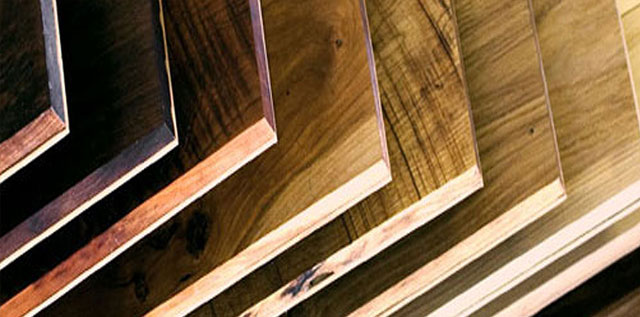
Which Species is Right for You? Part 1: Learning the Lingo
There are many species of wood used for hardwood flooring. Navigating your way through the descriptions of each can be a daunting task. In this post we will take a look at some of the language used to describe the different characteristics of each species.
Heartwood and Sapwood
When reading the description of a single species, you will often come across something like this: “The heartwood of is a reddish fleshy color while its sapwood is a lighter cream color.”
Huh? I thought we were just talking about one kind of wood here? We are. Kind of.
Heartwood is the name given to wood from the center of a tree that is composed of dead cells and is generally darker and harder than the outer rings of the tree. Its darker color is the result of deposits of gum, tannins, and pigments, which vary with each species of the tree.
Sapwood is the name given to the wood that is composed of still living cells in the outer layers of the tree that conduct water upwards. The sapwood is generally lighter than the heartwood. All heartwood was originally sapwood.
Often, wide plank floorboards come from such a broad cross-section of a tree that a single board will be both heartwood and sapwood, resulting in a much sought-after contrast of light and dark shades within a single species.
Wood Rays
Wood rays are stripes or lines, usually of a slightly lighter color than the rest of the board, that extend across it perpendicularly to the grain. In a tree, wood rays serve to transport nutrients horizontally.
Wood rays vary in visibility and pattern. In some species, wood rays will not be visible to the naked eye. In others, particularly Oak species that have been quarter sawn, wood rays may appear as beautiful striping.
Hardwood and Softwood
This one seems like a no-brainer, but it’s important to note while it is usually the case, not all softwoods are softer than all hardwoods. Each group has tremendous variation.
Hardwoods come from angiosperm trees—trees that reproduce with flowers. Softwoods come from gymnosperm trees—trees that reproduce with seeds.
A good rule of thumb is that hardwoods are trees with broad leaves, and softwoods are trees with needles.
Durability and Hardness
Resistance to marring is a critical element to consider when selecting a hardwood floor. If you’re expecting a lot of dropping, dragging, and general heavy use, then you should expect a softer wood such as pine to mark easily, where as a harder wood like Oak will withstand far more abuse.
While it’s not a perfect indicator of wear-resistance, the Janka Hardness Test grades the hardness and durability of wood by measuring how much pressure it takes to push a small steel ball halfway into the face of a board. The more pressure it takes, the more resistant to marring and scarring the wood is.
Each species of wood is given a Janka Score, which tells how many pounds of force it takes to embed the steel ball halfway into the wood. The Janka score of Red Oak, for example, is 1290 where as the Janka score for Southern Yellow Pine is only 690.
Now that we know a little more of the language of hardwood flooring, check out Part 2: Which Species Is Right For You?